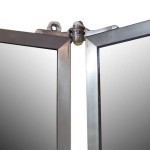How To Do Screen Mirroring On Laptop Windows 7
Screen mirroring, also known as screen casting, allows users to project their laptop display onto a larger screen, such as a television or projector. This functionality is useful for presentations, watching movies, or sharing content with a larger audience. While Windows 7 lacks some of the built-in wireless display features found in later Windows versions, several methods enable screen mirroring with readily available hardware or software.
Using an HDMI Cable
The most straightforward and reliable method for screen mirroring on a Windows 7 laptop is using an HDMI cable. This cable transmits both audio and video signals, providing high-quality output.
First, ensure both the laptop and the receiving display (TV or projector) have available HDMI ports. Connect the HDMI cable to both devices. On the receiving display, select the appropriate HDMI input source using the remote control or the device's onboard controls.
On the Windows 7 laptop, press the Windows key + P. This will open the "Project" menu. This menu offers several display options:
- Computer Only: The display output is shown only on the laptop screen.
- Duplicate: The same image is displayed on both the laptop screen and the external display.
- Extend: The external display acts as an extension of the laptop's desktop, allowing the user to drag windows and applications between screens.
- Projector Only: The display output is shown only on the external display, effectively turning off the laptop screen.
Select the desired option, typically "Duplicate" for screen mirroring.
Using a VGA Cable
If an HDMI port is unavailable, a VGA cable can be used for screen mirroring. VGA cables transmit only video signals; therefore, a separate audio connection will be required if audio output is desired.
Connect the VGA cable between the laptop's VGA port and the receiving display's VGA port. Connect a separate audio cable (usually a 3.5mm audio cable) from the laptop's headphone jack to the audio input on the receiving display or an external speaker system.
Similar to the HDMI method, use the Windows key + P to access the "Project" menu and select the desired display option.
Wireless Display Adapters
Several manufacturers offer wireless display adapters that can be used for screen mirroring without physical cables. These adapters typically connect to the receiving display's HDMI port and create a wireless network that the laptop can connect to.
Install the necessary software or drivers for the wireless display adapter on the Windows 7 laptop. Follow the manufacturer's instructions for connecting the laptop to the adapter's wireless network. Once connected, the laptop's display should be mirrored on the receiving display.
Miracast
While Miracast is not natively supported by Windows 7, some wireless display adapters offer Miracast compatibility. If using a Miracast adapter, refer to the adapter's instructions for connecting the Windows 7 laptop.
Software Solutions
Third-party software solutions can facilitate screen mirroring over a local network. These software applications typically require installation on both the laptop and a receiving device, such as a smart TV or another computer.
Research and choose a screen mirroring software application compatible with Windows 7. Install the software on both the laptop and the receiving device. Configure the software according to the application's instructions to establish a connection and initiate screen mirroring.
DLNA-Compatible Devices
If the receiving display is DLNA-compatible (Digital Living Network Alliance), it might be possible to stream media content from the Windows 7 laptop to the display. This method is not true screen mirroring, but it allows for sharing specific media files.
Ensure both the laptop and the DLNA device are connected to the same network. Use Windows Media Player or other DLNA-compatible software on the laptop to select the media files to be streamed and choose the DLNA device as the playback destination.
Troubleshooting
If encountering issues with screen mirroring, ensure all cables are securely connected, necessary drivers are installed, and the receiving display is set to the correct input source. Restarting both the laptop and the receiving display can sometimes resolve connectivity problems.

Cast Screen From Windows 7 Os No Hw Required

Cast Screen From Windows 7 Os No Hw Required

How To Connect Phone Windows 7 Laptop

Cast Screen From Windows 7 Os No Hw Required

Miracast On Windows 7 How To And Use Airdroid

Cast Screen From Windows 7 Os No Hw Required

How To Screen Mirror Stream Laptop Pc Tv Wireless No Adapters

What Is Screen Mirroring Hp Tech Takes

How To Use Miracast On Windows Full Guide

How To Screen Mirror On Windows 7 Or 8 In Hindi 100 Work Guarantee Tech Uday Cast








